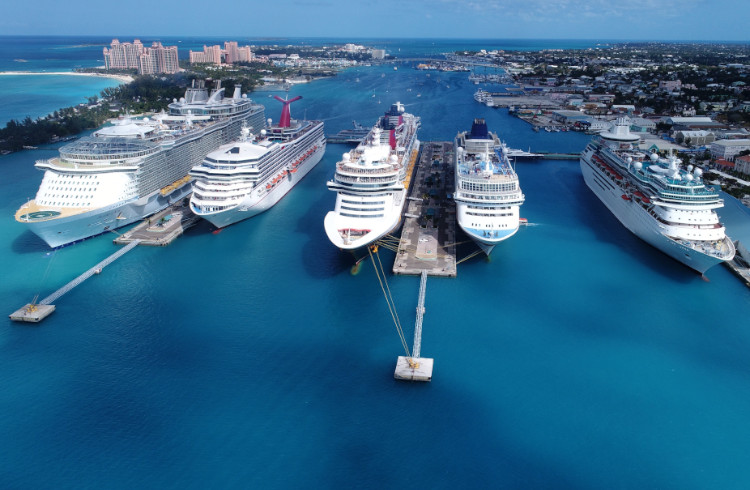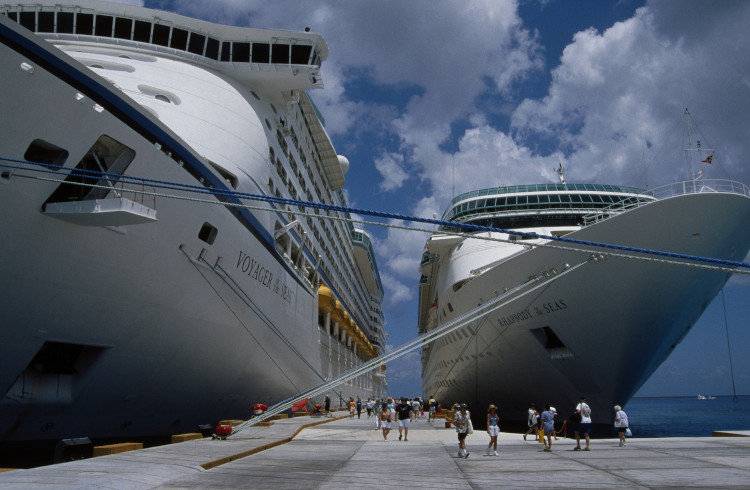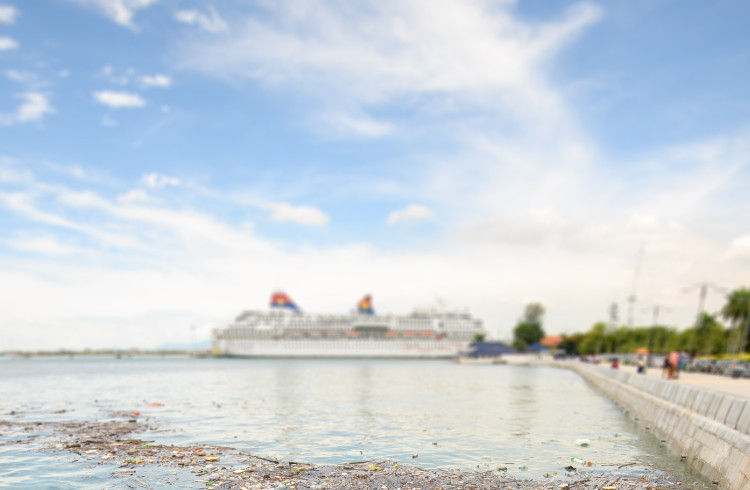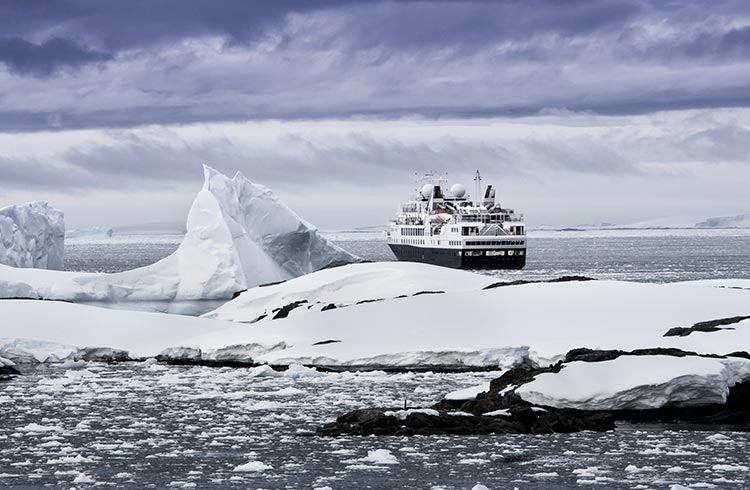6 Reasons To Reconsider a Cruise
Cruising may be back in a big way but there are good reasons not to jump on the bandwagon – cruise ships are more harmful to the planet than you may think.
 Photo © Daniel Piraino / EyeEm
Photo © Daniel Piraino / EyeEm
No longer the domain of retirees reclining on poolside sun loungers with cocktails in hand, cruising is gaining appeal with younger holidaymakers and adventurers looking to explore the world in style.
Newer, better ships are being built every year as cruise lines compete to lure first-time cruisers and keep repeat guests coming back for more. Dowdy and dated cruise ships are also being updated with interiors akin to luxury resorts with everything from bowling alleys and snow grottos to zip lines, water slides and Michelin-starred restaurants. But at what cost to the environment?
More than 30 million people booked a cruise in 2019 and, while COVID-19 clearly caused a hiccup in cruising’s exponential growth, it is once again the fastest-growing sector in the tourism industry. Passenger numbers are expected to reach pre-pandemic numbers by the end of 2023 – and grow a further 12 percent by 2026. Royal Caribbean's Wonder of the Seas is currently the biggest cruise ship in the world, carrying up to 6,988 passengers and 2,300 crew. There are seven neighborhoods on board, along with an ice rink, 24 dining options, casinos, theatres, gyms and even parklands.
It should come as no surprise that the cost of moving a ship that size through the ocean comes at a price to the environment, but it isn’t just the giant vessels that do the damage. A recent study found that passengers on board a cruise to Antarctica can produce the same carbon emissions on a seven-day expedition as the average European produces over the course of an entire year.
- Sewage has to go somewhere
- Local communities suffer
- Carbon emissions are excessive
- Leftover food goes overboard
- There’s only so much that can be recycled
- Cruise ships cause noise pollution
Despite the efforts cruise lines are making to reduce their impact on the environment, there’s no doubt this mode of travel takes a toll on fragile ecosystems, marine life and the planet as a whole.
Here’s how to cruise more sustainably if it’s something you still want to do.
1. Sewage has to go somewhere
Passengers on a seven-night cruise on a mid-sized ship can generate more than 750,000 liters of blackwater otherwise known as sewage. According to Friends of the Earth, which measures the environmental footprint of 18 major cruise lines and 213 cruise ships in an annual Cruise Ship Report Card, most of the sewage generated on cruise ships is released untreated into the sea. Once these floating resorts move a few miles away from shore, they are no longer required to treat sewage before discharging it.
2. Local communities suffer
Ever had to leave a public swimming pool due to a Code Brown? The same issue can affect coastal communities when raw sewage is dumped just offshore as waves and currents carry human excrement into populated areas. Less visible but no less harmful, sewage can also contain chemicals, pharmaceuticals, bacteria, viruses, heavy metals and hazardous waste.
When cruise ships carrying thousands of people descend on a port, the impact on local people is significant. While business owners prosper when cashed-up cruisers arrive, local people trying to go about their lives can find the crowds an imposition. Little wonder port cities such as Venice are restricting all but the smallest cruise ships from its waters.

3. Carbon emissions are excessive
An overnight stay on board a cruise ship uses 12 times more energy than a stay in a land-based hotel, according to a study published in the Marine Pollution Bulletin. Cruise ships keep their motors running 24 hours a day, even when they’re in port and the largest cruise ships weigh more than 230,000 gross registered tons, so moving them through the water is no mean feat. Even medium-sized ships use around 150 tonnes of fuel a day, emitting as much particulate as a million cars.
4. Leftover food goes overboard
All-you-can-eat buffets piled high with food of every description may be fun, but they’re less fun when you think about what happens to the leftovers. Unprocessed food waste can be lawfully disposed of 12 nautical miles from land, and there’s an awful lot of it. Uneaten food from passenger plates and kitchen scraps from the numerous restaurants on board all add up. While more responsible ships use bio-digesters to churn up waste before dumping it overboard, this isn’t required by law.
5. There’s only so much that can be recycled
In theory, cruise ship rubbish is either incinerated on board or collected for recycling (glass, plastic, aluminum and paper) but the industry has a poor record when it comes to waste management, with some cruise lines fined for dumping plastic at sea.
It isn’t just rubbish generated on board that’s the problem, however. When ships reach the end of their lives, they go to cruise ship graveyards for stripping and gradual dismantling. While much of the metal can be melted down and everything from light fittings to life jackets sold off, everything that can’t be repurposed, sold on, or recycled ends up as landfill.

6. Cruise ships cause noise pollution
The engine/propellor noise and vibration ships make as they move through the water can interfere with marine life breeding and feeding, cause stress-hormone levels to spike, and even damage the hearing of marine mammals such as dolphins and whales. As the number of cruise ships (and ships in general) rises, marine noise pollution will intensify.
Still want to go on a cruise? There are ways to reduce your cruising footprint:
- Choose a small ship. The smaller the ship, the lower its impact on the environment. Think river cruises, small expedition ships and wind-powered vessels.
- Support cruise lines committed to the planet.
- Do your research and choose a cruise ship using scrubbers (exhaust gas cleaning systems) that meet or exceed air emissions requirements.
- Seek out ships using LNG fuel, which cuts carbon emissions by a quarter.
- Support cruise lines striving to become carbon neutral by 2050.
- Choose a hybrid cruise ship that generates zero emissions when in port.
Related articles
Simple and flexible travel insurance
You can buy at home or while traveling, and claim online from anywhere in the world. With 150+ adventure activities covered and 24/7 emergency assistance.
Get a quote

No Comments